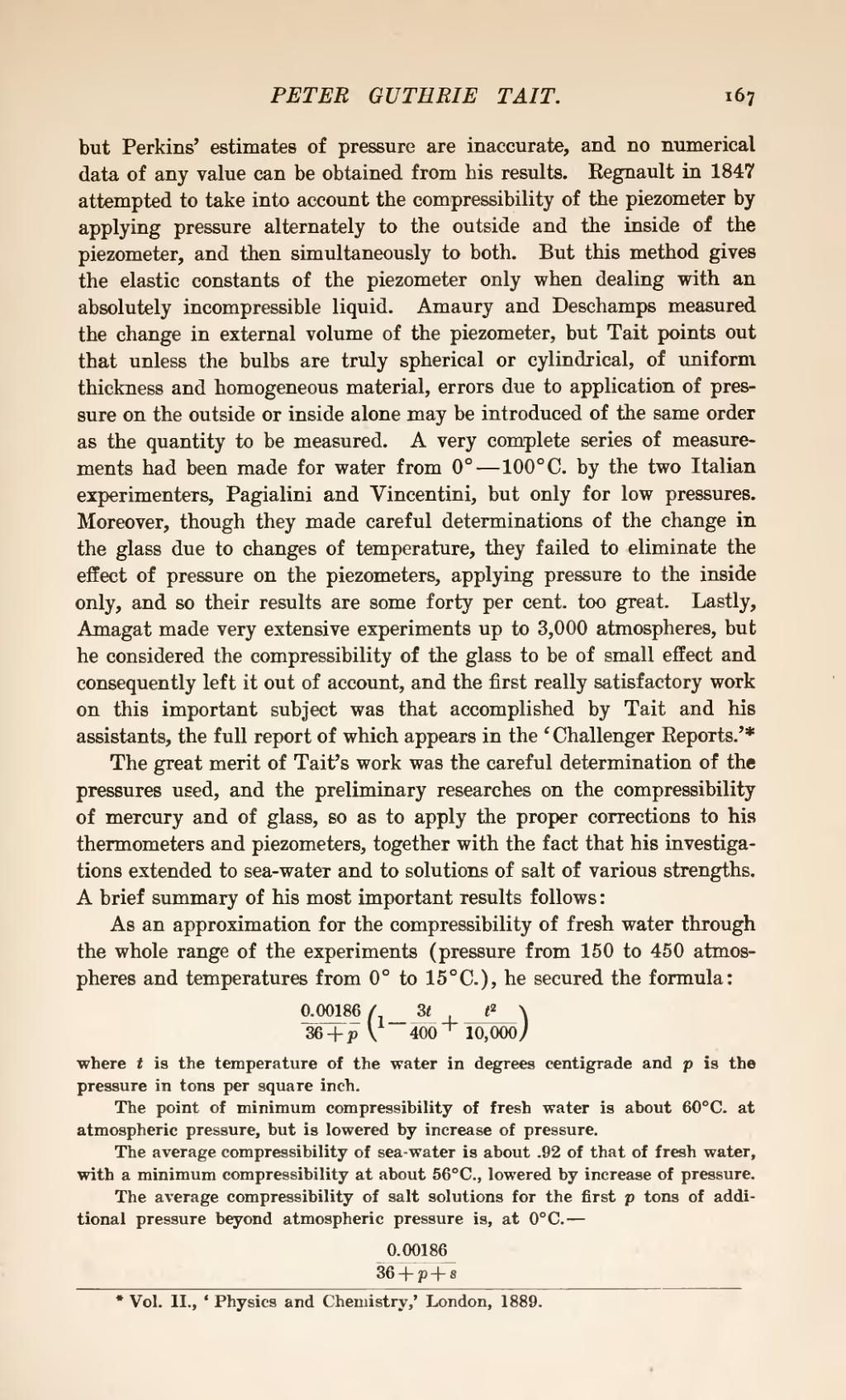but Perkins' estimates of pressure are inaccurate, and no numerical data of any value can be obtained from his results. Regnault in 1847 attempted to take into account the compressibility of the piezometer by applying pressure alternately to the outside and the inside of the piezometer, and then simultaneously to both. But this method gives the elastic constants of the piezometer only when dealing with an absolutely incompressible liquid. Amaury and Deschamps measured the change in external volume of the piezometer, but Tait points out that unless the bulbs are truly spherical or cylindrical, of uniform thickness and homogeneous material, errors due to application of pressure on the outside or inside alone may be introduced of the same order as the quantity to be measured. A very complete series of measurements had been made for water from 0°—100 °C. by the two Italian experimenters, Pagialini and Vincentini, but only for low pressures. Moreover, though they made careful determinations of the change in the glass due to changes of temperature, they failed to eliminate the effect of pressure on the piezometers, applying pressure to the inside only, and so their results are some forty per cent, too great. Lastly, Amagat made very extensive experiments up to 3,000 atmospheres, but he considered the compressibility of the glass to be of small effect and consequently left it out of account, and the first really satisfactory work on this important subject was that accomplished by Tait and his assistants, the full report of which appears in the 'Challenger Reports.'[1]
The great merit of Tait's work was the careful determination of the pressures used, and the preliminary researches on the compressibility of mercury and of glass, so as to apply the proper corrections to his thermometers and piezometers, together with the fact that his investigations extended to sea-water and to solutions of salt of various strengths. A brief summary of his most important results follows:
As an approximation for the compressibility of fresh water through the whole range of the experiments (pressure from 150 to 450 atmospheres and temperatures from 0° to 15°C), he secured the formula:
The point of minimum compressibility of fresh water is about 60°C. at atmospheric pressure, but is lowered by increase of pressure.
The average compressibility of sea-water is about .92 of that of fresh water, with a minimum compressibility at about 56°C, lowered by increase of pressure.
The average compressibility of salt solutions for the first p tons of additional pressure beyond atmospheric pressure is, at 0°C.—
- ↑ Vol. II., 'Physics and Chemistry,' London, 1889.


